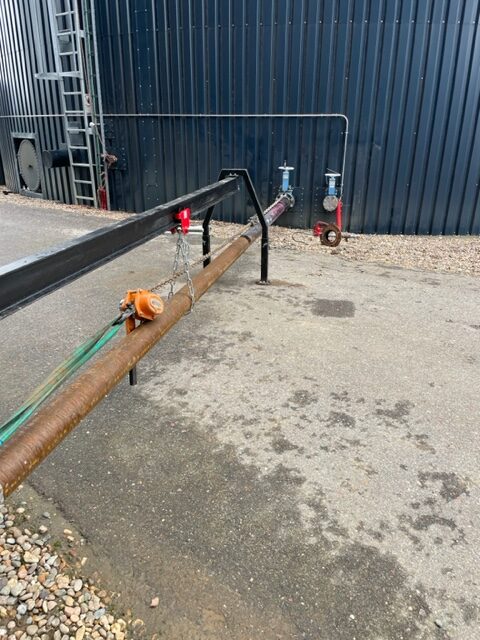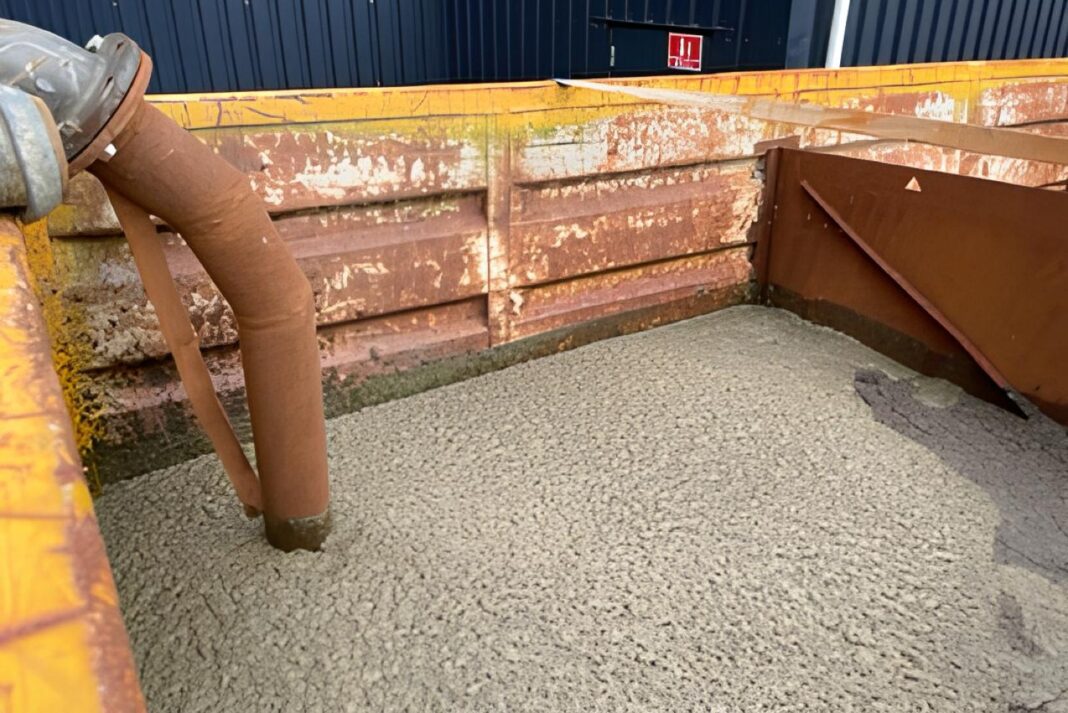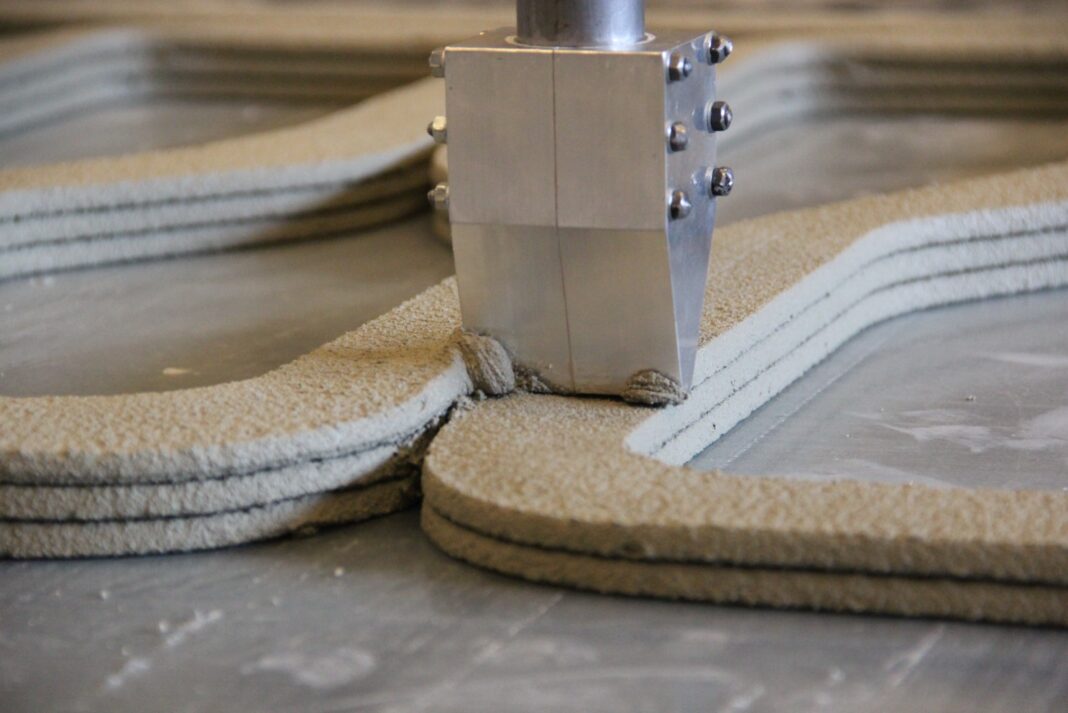Mathias Bjerg’s project for the next generation of bioreactors
In biogas production, one of the main obstacles is the accumulation of sand and heavy dry materials inside bioreactors. This reduces the useful capacity of the plant, slows down biological processes, and forces companies into costly maintenance operations. On top of that, there is a dramatic issue: worker safety.
“When a bioreactor needs to be emptied to remove sand,” explains Mathias Bjerg, R&D director at Bio reactor sand removal ApS. “Workers often enter the plant with machines like bobcats. It’s extremely risky work: there have been cases where operators got trapped in the sediments. This is a problem we cannot ignore anymore.”
From case study to an engineered solution
The idea emerged when a biogas company contacted Bjerg to find a solution. At the time, he was still a student — but he accepted the challenge. “They told me: we have a problem with sand in our reactor. I took that idea, turned it into a concept, and tested it with a group of engineers. We tried different options until we found a mechanism that really worked.”
The system relies on two concentric chambers — a central suction duct and a peripheral water conduit. Water jets are injected at controlled angles (up to 90°), creating localized turbulence that loosens compacted sand. “We designed a flow pattern that mobilizes sediment efficiently and directs it toward the suction unit,” Bjerg explains.
The system relies on two concentric chambers — a central suction duct and a peripheral water conduit. Water jets are injected at controlled angles (up to 90°), creating localized turbulence that loosens compacted sand. “We designed a flow pattern that mobilizes sediment efficiently and directs it toward the suction unit,” Bjerg explains.

Behind this apparently simple mechanism lies a rigorous understanding of fluid dynamics:
- Jet impingement dynamics to stir up sediment;
- Laminar vs. turbulent flow control to optimize mixing and flow stability;
- Pressure gradients and vacuum suction to drive the sediment-laden slurry out of the reactor.
Before physical testing, mechanical simulations — including von Mises stress analysis — were conducted to ensure the structural integrity of the reactor walls. The chosen materials, stainless steel and PTFE (Teflon®) for the seals, guarantee corrosion resistance and long-term reliability in the harsh chemical environment in biogas reactors.
Redefining maintenance — without shutdowns
“This method doesn’t eliminate maintenance cycles,” clarifies Bjerg, “it changes the entire concept of maintenance.”
Traditionally, when sand builds up inside a reactor, operators must stop production entirely. The active biological material is pumped into other reactors that keep running, after which the one in maintenance is emptied from the top using cranes to remove the dry material. When the sediment level drops low enough, part of the reactor wall is opened, and operators physically enter with a bobcat to complete the cleaning. This process is slow, dangerous, and costly — and the reactor remains offline the entire time, resulting in lost production and revenue.
“With our method, maintenance looks completely different,” says Bjerg.
- The extraction team shows up to the side with the equipment and locates the entrances into the reactor through flanges.
- The patented extraction tool is set up to one of the flanges (together with the needed safety equipment (the same as the operators are using on a day-to-day shift), and starts to pump out the dry material from the reactor.
- The system pumps out the dry material from inside the reactor.
- This process is repeated at all reachable access points until the sediment is minimized — and the team leaves.
“In this way, the company doesn’t ‘avoid’ maintenance,” he explains. “It removes shutdowns — keeping the reactor active and productive while eliminating downtime losses.”
System Simulation
Economic, environmental, and safety benefits
“The system also extends the reactor’s operational life. Without this technology, a reactor must typically be shut down every 2–3 years for maintenance; with the patented method, it can run up to 10 years before inspection.
While direct operational costs per extraction may drop from around 0.3 to 0.2 million DKK, the main economic advantage comes from maintaining production — avoiding downtime losses estimated between 0.5 and 1.2 million DKK per maintenance cycle.”
From an environmental point of view, the filtered water can be reused without harming the biological process, while valuable minerals can be recovered. This solution can use the rainwater collected on site.
Most importantly, the system drastically improves safety. “By relocating the extraction process to the outside of the reactor,” says Bjerg, “we remove the need for anyone to enter. If we can prevent people from entering dangerous spaces, we can save lives.”
Internal risk evaluations were performed following ISO 31000:2018 standards, addressing hazards like explosion risk, hydrogen sulfide exposure, and confined-space entry. “Our patented system eliminates these dangers completely,” Bjerg emphasizes.
The challenge of technology transfer
As often happens, moving from prototype to industrial adoption requires solid partnerships. Bjerg’s team has already filed an approved EU patent and is seeking industrial partners.
Bringing the system from a prototype to an industry-ready solution requires collaboration across the sector. Industrial partners are essential not only to scale production, but also to ensure that safety standards and efficiency improvements are shared throughout the biogas industry. By joining forces, companies can increase their production capacity, reduce operational risks, and strengthen the entire value chain.
The system is adaptable to reactors of various sizes, with flexible tool lengths that can reach even compact areas and take advantage of the reactor’s natural internal flow dynamics.
Future development includes automation and robotics for insertion and control, as well as modular extensions that can be screwed on from outside the reactor — a step toward full remote operation.
Bridging research and industry
This project represents an exemplary case of applied research turned into industrial innovation. It was born from a real problem, evolved into an engineering solution, and is now ready for commercialization.
“The patent represents an opportunity to significantly improve the biogas industry,” says Bjerg. “If any company or researcher is interested in acquiring or developing it further, we would be happy to collaborate.”
A concrete example of how research and industry — working together — can create value, improve safety, and make renewable energy production more efficient and sustainable.









